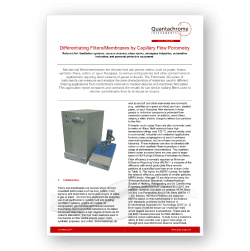Differentiating Filters/Membranes by Capillary Flow Porometry
ABSTRACT Mechanical filters/membranes are devices that use porous media, such as paper, foams, synthetic fibers, cotton, or spun fiberglass, to remove solid particles and other contaminants in applications requiring clean streams of gases or liquids. The Porometer 3G series of instruments can measure and analyze the pore characteristics of materials used in different filtering applications from contaminant removal to medical devices and electronic fabrication. This application report compares and contrasts the results for two similar looking filters used to remove contaminants from an in-house air source.
Click below to download this Application Note

Excerpted from the Text:
Filters and membranes are devices which remove unwanted particulates such as dust, pollen, mold, bacteria and more from a continuous stream of either a gas or liquid. An important application for everyday use in air purification is notably built into building ventilation systems, engine air intakes, air compressors, gas turbines and vacuum cleaners. Importantly, cleanrooms that manufacture the latest electronics also require a high degree of clean air for material fabrication. The four main materials used in mechanical air filter media include paper, foam, synthetic polymers, and cotton. Some buildings, as well as aircraft and other man-made environments (e.g., satellites and space shuttles) use foam, pleated paper, or spun fiberglass filter elements to keep people or individual components protected from unwanted contaminants. In addition, some filters employ a static electric charge to attract dust particles to the filter.
Polyester and/or glass fibers are also commonly used to make air filters. Both materials have high temperature ratings near 120 °C, and are widely used in commercial, industrial and residential applications. In some cases polypropylene is used to enhance chemical resistance, but has a lower temperature tolerance. These materials can also be blended with cotton or other synthetic fibers to produce a wider range of performance characteristics. Tiny synthetic fibers known as micro fibers are also used in many types of HEPA (High Efficiency Particulate Air) filters. Filter efficiency is normally reported as Minimum Efficiency Reporting Value (MERV) – a measure of the efficiency with which particulate filters remove particles of a specified size from an air stream. The higher the MERV number, the better the removal efficiency, particularly of smaller particles. MERV levels 1 through 16 are determined using the American National Standards Institute/American Society of Heating, Refrigerating and Air Conditioning Engineers (ANSI/ASHRAE) Standard 52.2-2017 test method. However, this does not address HEPA filters or Ultra Low Penetration Air (ULPA) filters (MERV 17 – 20). Instead, HEPA/ULPA filters are assigned MERVs based on their performance in accordance with standards published by the Institute of Environmental Sciences and Technology (IEST). Both types of test are known as “challenge†tests which require standard dust particles. These tests do not truly measure pore size but their abilities to remove certain particulates. To truly know a material’s ability to filter particles over a given size range, its through pore size distribution must be determined, and this can be quickly and automatically done by capillary flow porometry experiments.

About Anton Paar USA
Anton Paar USA is a subsidiary of the Graz, Austria-based Anton Paar. Anton Paar is the world’s premier manufacturer of measuring and analytical instrumentation used by laboratories and manufacturers during both research and development and quality control. Founded in 1922, Anton Paar now has subsidiaries in 31 different countries across the world.
Since the beginning of 2018, Anton Paar USA has expanded its USA operations to include four regional offices, with full sales and laboratory operations now taking place in Torrance, California, Houston, Texas, and Chicago, Illinois, while the main Anton Paar USA headquarters remains in Ashland, Virginia.

About Covalent Metrology
Covalent Metrology is a disruptive analytical services laboratory and platform based in Sunnyvale, California. Its mission is to help companies using advanced materials and nanoscale devices accelerate product development with deeper insights and better analytical data. Covalent offers comprehensive solutions and services that integrate state-of-the-art lab infrastructure, world-class experts in a wide array of analytical techniques, and modern data management and analysis.
Covalent now has over 500 customers in 30+ industries.
Learn more at: https://covalentmetrology.com
